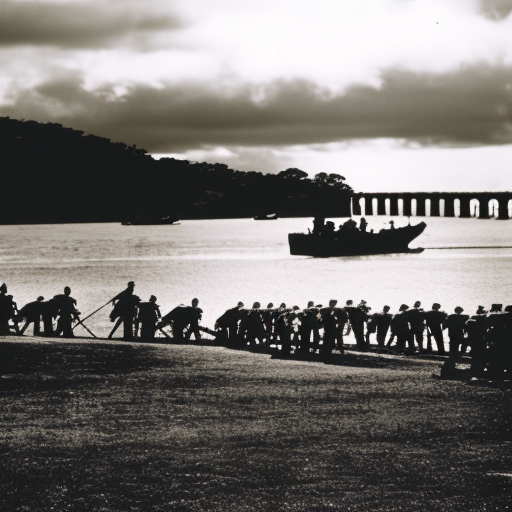Battle of Port Arthur: Russo-Japanese War
The Battle of Port Arthur was a significant naval engagement that took place during the Russo-Japanese War from February 8 to August 10, 1904. It was a major confrontation between the Russian Empire and the Empire of Japan for control over the strategic Port Arthur (now Lüshunkou) in northeastern China.
Background:
The Russo-Japanese War was fought between Russia and Japan over territorial disputes in Manchuria and Korea. Port Arthur, a heavily fortified naval base, was a crucial objective for both sides due to its strategic location and the presence of the Russian Pacific Fleet. The Japanese aimed to neutralize the Russian fleet and gain control of the region.
Opening Moves:
On February 8, 1904, the Japanese launched a surprise attack on the Russian fleet at Port Arthur. The attack was led by Admiral Tōgō Heihachirō, who commanded the Japanese Combined Fleet. Despite the element of surprise, the Russian fleet managed to inflict significant damage on the Japanese forces, sinking two Japanese battleships and damaging several others.
Siege of Port Arthur:
Following the initial attack, the Japanese implemented a blockade to isolate Port Arthur from outside support. The Russian fleet, trapped in the harbor, was unable to break free and engage the Japanese in open waters. The Japanese forces also bombarded the Russian defenses from land and sea, gradually weakening the Russian garrison.
Land Operations:
In addition to the naval blockade, the Japanese launched several land offensives to capture the surrounding areas and further isolate Port Arthur. These operations included the Battle of Nanshan, the Battle of Te-li-Ssu, and the Battle of Hsimucheng. The Japanese forces faced fierce resistance from the Russian defenders but managed to make steady progress.
Second Naval Battle:
On August 10, 1904, the Japanese launched a second major naval assault on the Russian fleet at Port Arthur. This time, they used torpedo boats to devastating effect, sinking or disabling several Russian warships. The Russian fleet was left in a severely weakened state, and the Japanese gained control of the sea.
Surrender and Aftermath:
After the second naval battle, the Russian commander, Vice Admiral Stepan Makarov, was killed when his flagship struck a mine. With their fleet crippled and their defenses crumbling, the Russian garrison at Port Arthur surrendered to the Japanese on January 2, 1905. The fall of Port Arthur was a significant blow to Russian morale and marked a turning point in the war.
Significance:
The Battle of Port Arthur was a decisive victory for Japan and demonstrated the effectiveness of their naval and military strategies. It also highlighted the weaknesses of the Russian Empire, leading to widespread discontent and contributing to the Russian Revolution of 1905. The battle further solidified Japan’s position as a major regional power and set the stage for their eventual victory in the Russo-Japanese War.
In conclusion, the Battle of Port Arthur was a critical engagement in the Russo-Japanese War. The Japanese successfully besieged and captured the heavily fortified Russian naval base, dealing a significant blow to the Russian Empire. The battle showcased Japan’s military prowess and marked a turning point in the war, leading to their eventual victory.












